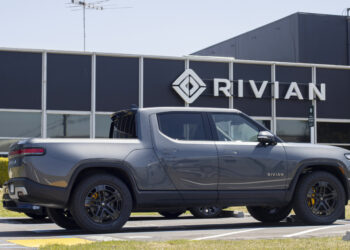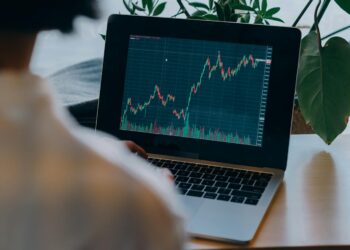TSLA’s Data Advantage and Regulatory Hurdles
Oppenheimer’s recent investor lunch highlighted the dual forces shaping the future of autonomous driving, focusing on Tesla (TSLA) and Uber (UBER). As detailed in Colin’s report, TSLA’s significant advantage lies in its extensive data collection and advanced neural network, which bolster its leadership in the autonomous driving sector. Despite these strengths, the journey toward fully operational driverless vehicles remains protracted, hampered by regulatory uncertainties.
TSLA’s neural network, powered by vast amounts of data, positions it at the forefront of autonomous vehicle technology. This data-driven approach is crucial for refining the systems that will eventually power self-driving cars. However, the path to commercialization is fraught with challenges, particularly in navigating the regulatory landscape. As regulations evolve, companies like TSLA must adapt, which could delay the deployment of autonomous vehicles.
The Future of the Robotaxi Industry
The Robotaxi industry, according to Oppenheimer’s analysis, is more than five years away from a consumer launch due to these regulatory and technological hurdles. This timeline suggests that while the technology is advancing, the practical and legal frameworks needed to support widespread use are still under development. By 2030, TSLA could potentially earn between $1-3 per share in net income from autonomous driving technologies, either through a Full Self-Driving (FSD) subscription model or a Robotaxi service.
The concept of a Robotaxi duopoly, where TSLA and Waymo are the primary operators with their own rider demand systems, poses a significant threat to UBER’s valuation. However, the landscape could shift if additional players, like Cruise, enter the market or if Waymo decides to license its technology broadly. A more open market would provide UBER with opportunities to partner or acquire autonomous driving capabilities, mitigating the risk of being sidelined.
Waymo’s Strategic Position and Industry Implications
Waymo’s approach, which includes partnerships with various companies, positions it uniquely within the industry. Their potential strategy of licensing autonomous driving technology to Original Equipment Manufacturers (OEMs) could be the most sustainable long-term path. By doing so, Waymo can leverage its technology across multiple platforms, similar to its success with search technology.
Waymo’s existing partnership with UBER in several cities exemplifies this collaborative potential. Such partnerships could become more prevalent as companies seek to combine strengths to overcome regulatory and technological barriers. The key to success in autonomous driving lies in data accumulation and usage, and partnerships can expedite this process.
UBER’s Challenges and Opportunities
For UBER, the future is a mix of potential and peril. In the short term, local wage regulations present a challenge, potentially increasing operational costs. However, UBER’s financial performance remains strong, and an upgrade to investment-grade status by late 2024 or early 2025 could enhance its financial flexibility. This upgrade would enable increased share buybacks and mergers and acquisitions, providing a buffer against competitive pressures.
One of the critical factors for UBER’s future will be the pace at which TSLA can ramp up its Full Self-Driving technology. If TSLA’s progress is slower than anticipated, skepticism may grow, benefiting UBER as it continues to dominate the ride-hailing market. Conversely, rapid advancements by TSLA could pressure UBER to accelerate its own autonomous driving initiatives.
Political Dynamics and Market Perceptions
Political relationships also play a role in this complex landscape. Elon Musk’s favorable relationship with a Trump administration, if it were to return, could be a tailwind for TSLA. Favorable policies or regulatory support could accelerate TSLA’s autonomous driving ambitions, potentially at UBER’s expense. Investors must consider these dynamics as they evaluate the long-term prospects of both companies.
The outlook for TSLA’s autonomous commercialization and the risks to UBER highlight the intricacies of the evolving transportation industry. While TSLA’s data and neural network give it a competitive edge, regulatory hurdles and technological challenges delay the arrival of driverless vehicles. The future of the Robotaxi industry hinges on market dynamics, regulatory developments, and strategic partnerships. For UBER, continued financial strength and strategic adaptability will be crucial in navigating this uncertain landscape. As the industry evolves, both TSLA and UBER must remain agile, leveraging their strengths and adapting to the changing environment.
You might like this article:CrowdStrike Black Eye Update Sparks Global IT Chaos











